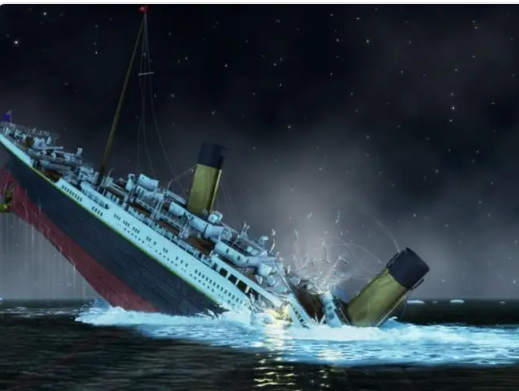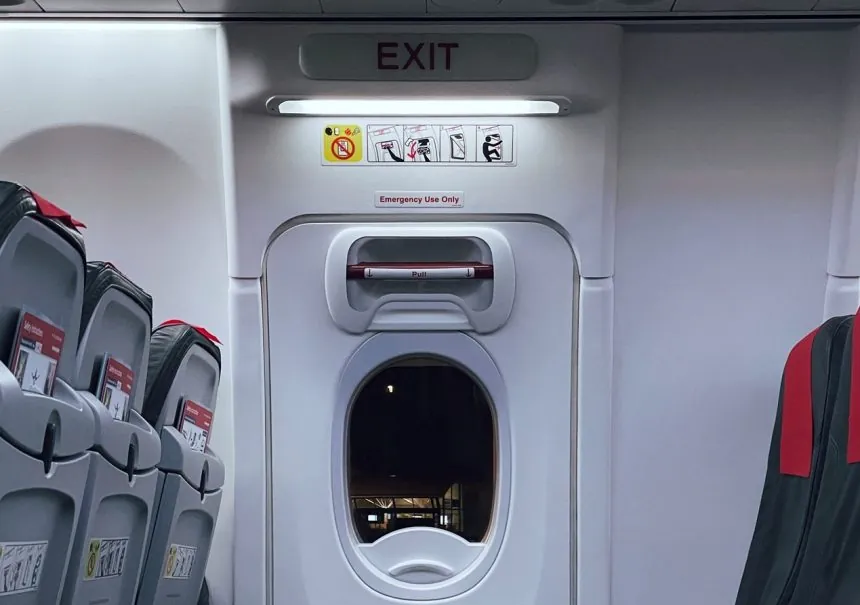Today, April 15, 2024, marks 112th years ago the RMS Titanic sank in the early morning hours of 15 April 1912 in the North Atlantic Ocean.

The Titanic struck an iceberg four days into her maiden voyage from Southampton, England to New York City, the United States, in which more than 1,500 people lost their lives – passengers and crew on board.
At the time, the Titanic as the largest ocean liner, not only the most luxurious but also the most technologically advanced, had an estimated 2,224 people on board when she struck an iceberg at around 23:40 (ship’s time) on Sunday, 14 April 1912.
Her sinking two hours and forty minutes later at 02:20 ship’s time (05:18 GMT) on Monday, 15 April, resulted in the deaths of more than 1,500 people, making it one of the deadliest peacetime maritime disasters in history.
Titanic received six warnings of sea ice on 14 April but was traveling at a speed of roughly 22 knots (41 km/h) when her lookouts sighted the iceberg.
Unable to turn quickly enough, the ship suffered a glancing blow that buckled her starboard side and opened six of her sixteen compartments to the sea.
Titanic had been designed to stay afloat with up to four of her forward compartments flooded, and the crew used distress flares and radio (wireless) messages to attract help as the passengers were put into lifeboats.
Under existing practice, the Titanic’s lifeboat system was manufactured to ferry passengers to nearby rescue vessels, not to hold everyone on board simultaneously.
This, therefore, made the ship sink rapidly, and with help still hours away, there was no safe refuge for many of the passengers and crew with only twenty lifeboats, including four collapsible lifeboats.
Poor preparation for and management of the evacuation meant many boats were launched before they were full.
Why the Titanic sank
Meanwhile, after the grandest maritime disaster which has continued to be spoken of, a lot of analyses were released on the root causes of the sinking, leading to massive loss of lives.
Below are five reasons the RMS Titanic sank on its maiden voyage:
- The ship was traveling too fast
From the beginning, some blamed the Titanic’s skipper, Captain E.J. Smith, for sailing the massive ship at such a high speed (22 knots) through the iceberg-heavy waters of the North Atlantic.
Some believed Smith was trying to better the crossing time of Titanic’s White Star sister ship, the Olympic. But in a 2004 paper, engineer Robert Essenhigh speculated that efforts to control a fire in one of the ship’s coal bunkers could have explained why the Titanic was sailing at full speed.
- The wireless radio operator dismissed a key iceberg warning
Less than an hour before the Titanic hit the iceberg, another nearby ship, the Californian, radioed to say it had been stopped by dense field ice.
But as the warning didn’t begin with the prefix “MSG” (Master’s Service Gram), which would have required the captain to directly acknowledge receiving the message, the Titanic’s radio operator Jack Phillips considered the other ship’s warning non-urgent, and didn’t pass it along.
- It may have taken a fatal wrong turn
According to a claim made in 2010 by Louise Patten (the granddaughter of the most senior Titanic officer to survive, Charles Lightoller), one of the ship’s crewmembers panicked after hearing the order to turn “hard-a-starboard” in order to avoid the approaching iceberg.
Because ships at the time operated on two different steering order systems, he became confused and turned the wrong way—directly toward the ice. Patten included this version of events, which she said she heard from her grandmother after Lightoller’s death, in her fictionalized account of the Titanic disaster, Good as Gold.
- The Titanic’s builders tried to cut costs
In 1985, when an American-French expedition finally located the historic wreck, investigators discovered that contrary to earlier findings, the Titanic had not sunk intact after hitting the iceberg but had broken apart on the ocean’s surface.
Two studies done around the time of the 100th anniversary of the Titanic disaster in 2012 suggested that nature played a key role in the ship’s fate. The first argued that the Earth came unusually close to both the moon and the sun that year, increasing their gravitational pull on the ocean and producing record tides, which caused increased amounts of floating ice in the North Atlantic around the time of the sinking.
The second study, by British historian Tim Maltin, claimed that atmospheric conditions on the night of the disaster might have caused a phenomenon called superrefraction. This bending of light could have created mirages, or optical illusions, that prevented the Titanic’s lookouts from seeing the iceberg clearly.
It also would have made the Titanic appear closer, and smaller, to the nearby ship the Californian, causing its crew to assume it was a different ship without a radio, preventing them from attempting to communicate. From their vantage point, and with these hazy conditions, when the Titanic started to sink, the Californian’s crew would have thought it was merely sailing away.
- The lookouts had no binoculars
Second officer David Blair, who held the key to the Titanic’s store of binoculars in his pocket, was transferred off the ship before it left for its maiden voyage from Southampton and forgot to hand over the key to the officer who replaced him. At a later inquiry into the sinking, a lookout on the Titanic said binoculars might have helped them spot and dodge the iceberg in time. Blair kept the key as a memento of his near-miss; it was auctioned off in 2007 and fetched some £90,000.
Extra: 6. There weren’t enough lifeboats
No matter what caused the Titanic to sink, such a massive loss of life could probably have been avoided if the ship had carried sufficient lifeboats for its passengers and crew. But the White Star liner left Southampton with only 20 lifeboats, the legal minimum, with a total capacity of 1,178 people.
Though Maurice Clarke, the civil servant who inspected the Titanic in Southampton, recommended it carry 50 percent more lifeboats, his handwritten notes at the time later revealed that he felt his job would be threatened if he did not give the famous ship the go-ahead to sail. Due to the chaos that ensued after the Titanic struck an iceberg, the 20 lifeboats departed the ship with some 400 empty seats, leaving more than 1,500 people to perish in the frigid ocean waters.




